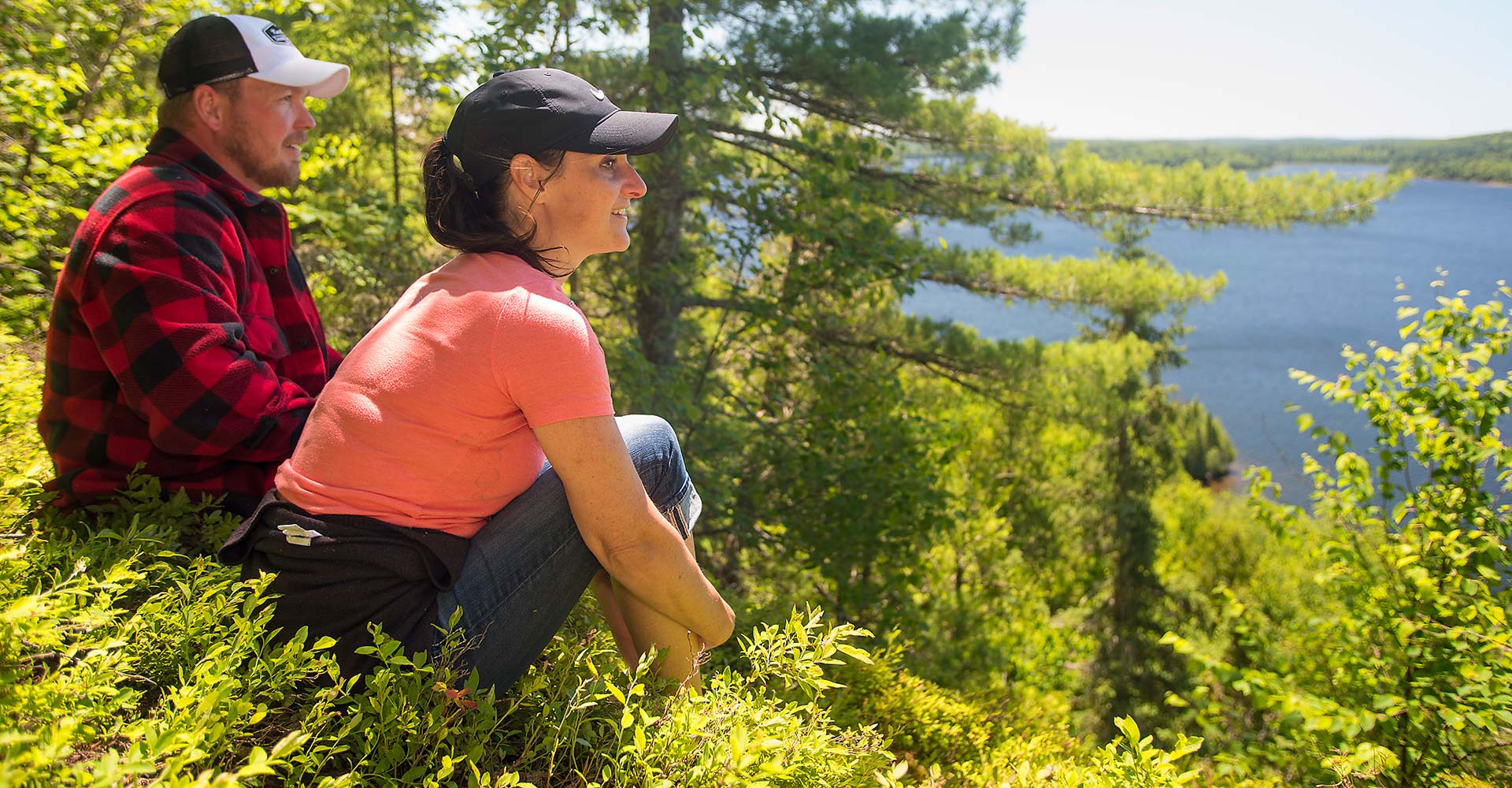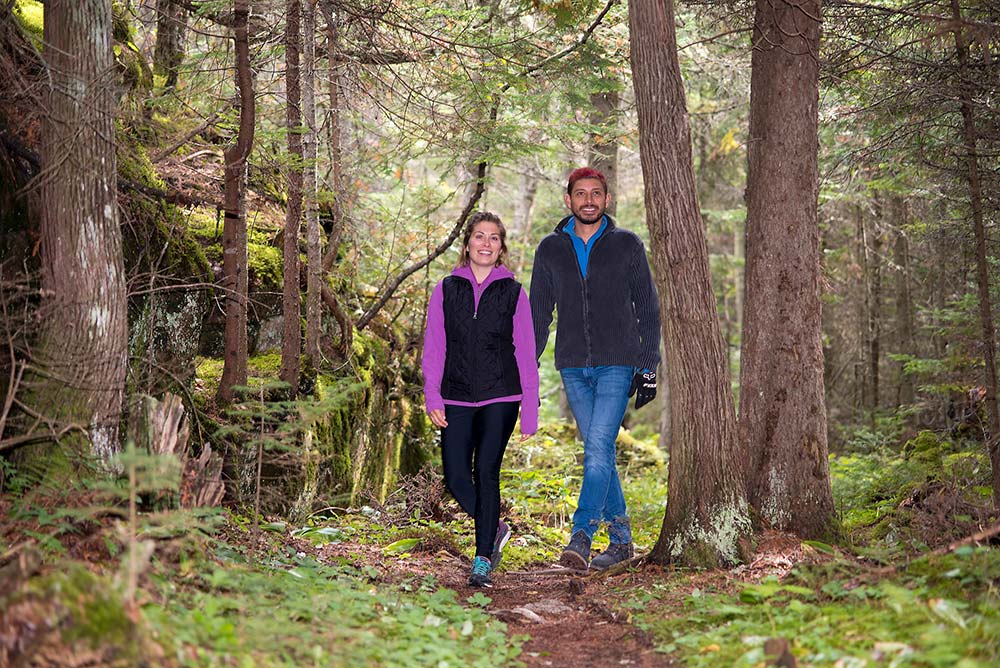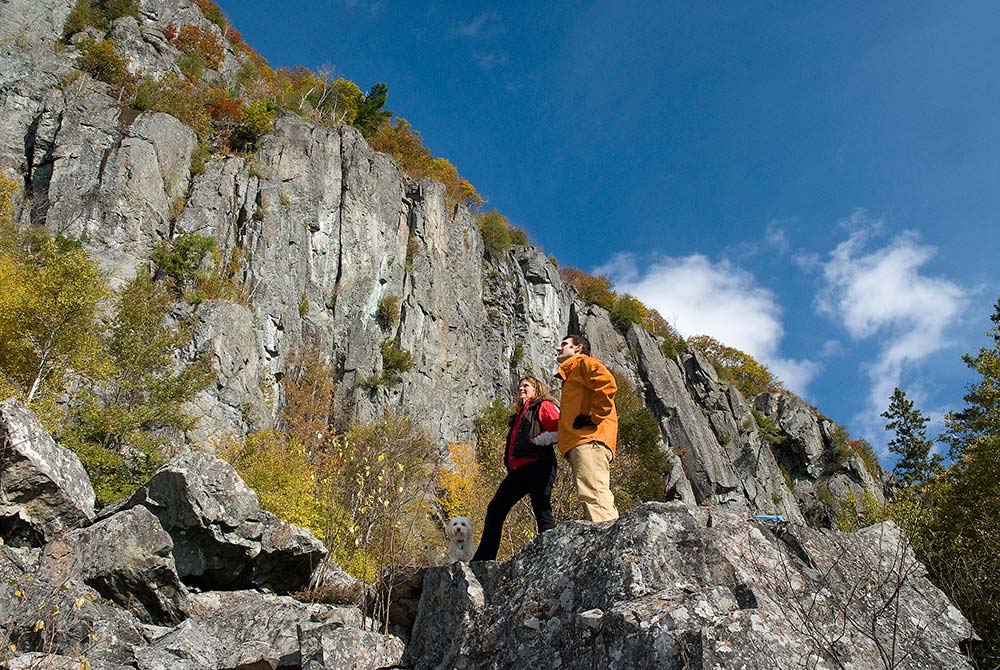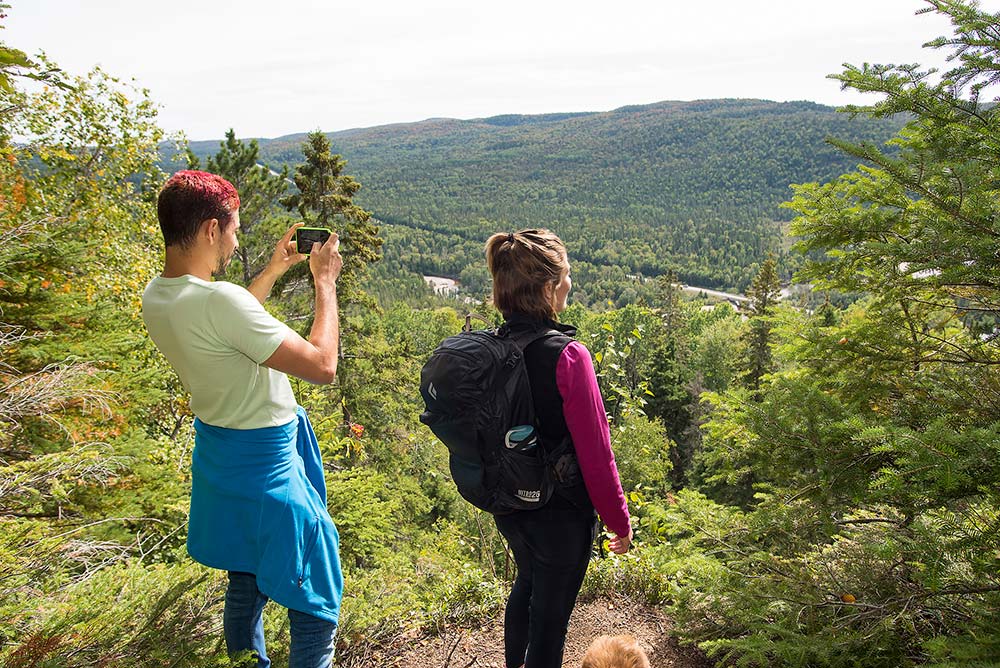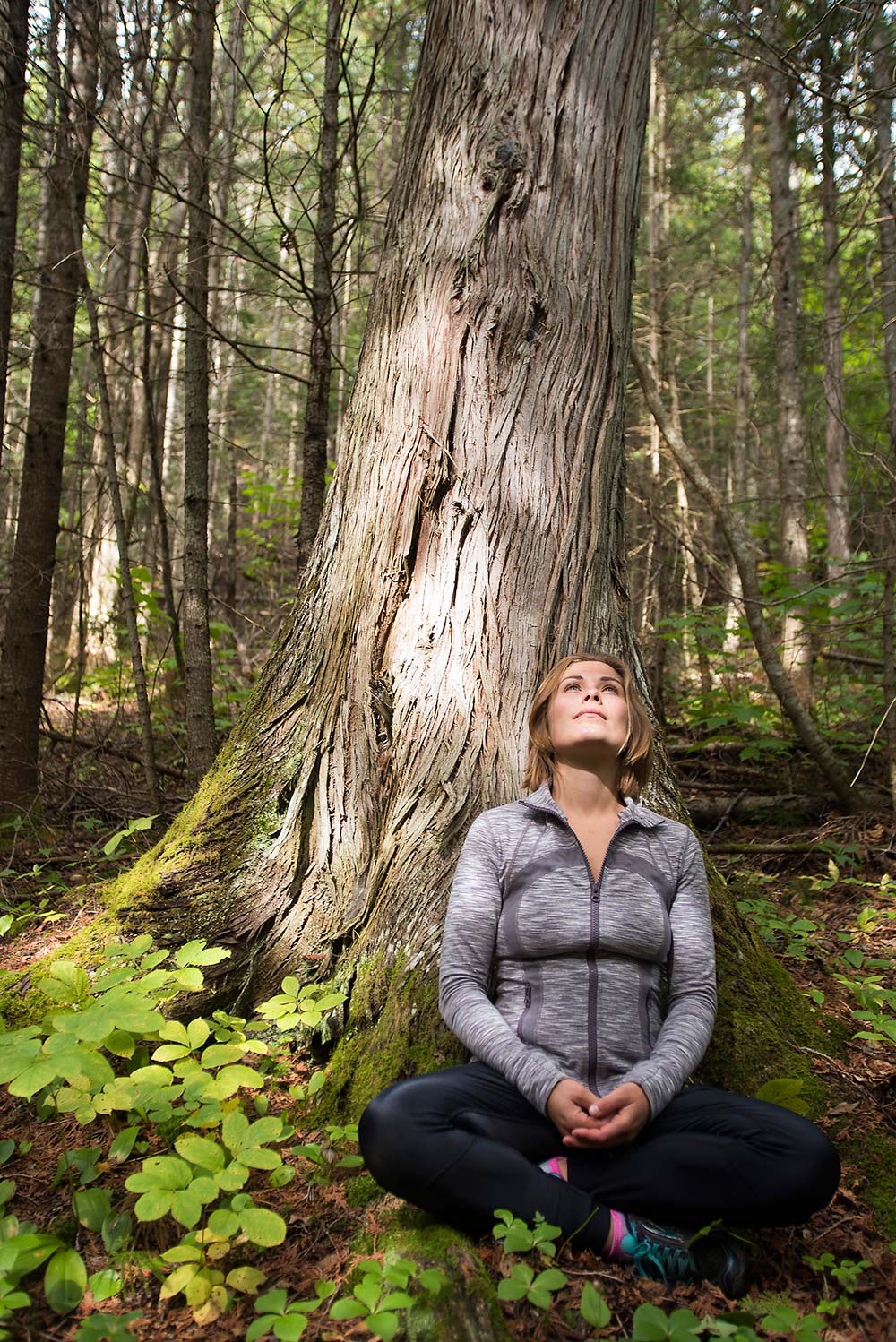Fine-tune what you bring in your pack
Considering the lay of the land, it should come as no surprise that hiking trails are one of the Algoma Region’s greatest assets. With the Canadian Shield asserting itself in rounded old mountains and angular terrain, looming over still lakes and roaring rivers, the potential for inspiring trails is as precipitous as the landscape. There is also a broad swath where the bedrock of the Shield melds with the coniferous low lands of the boreal forest to provide a unique transitional foundation incorporating the best of both worlds.
Photo Credit: James Smedley
Trails range from maintained hikes in provincial parks, complete with maps and interpretive signage, to traditional paths with no signs at all. The beauty of hiking is that it’s a simple and healthy way to enjoy a day outdoors, but there are still some things to consider in making the most of our time afield.
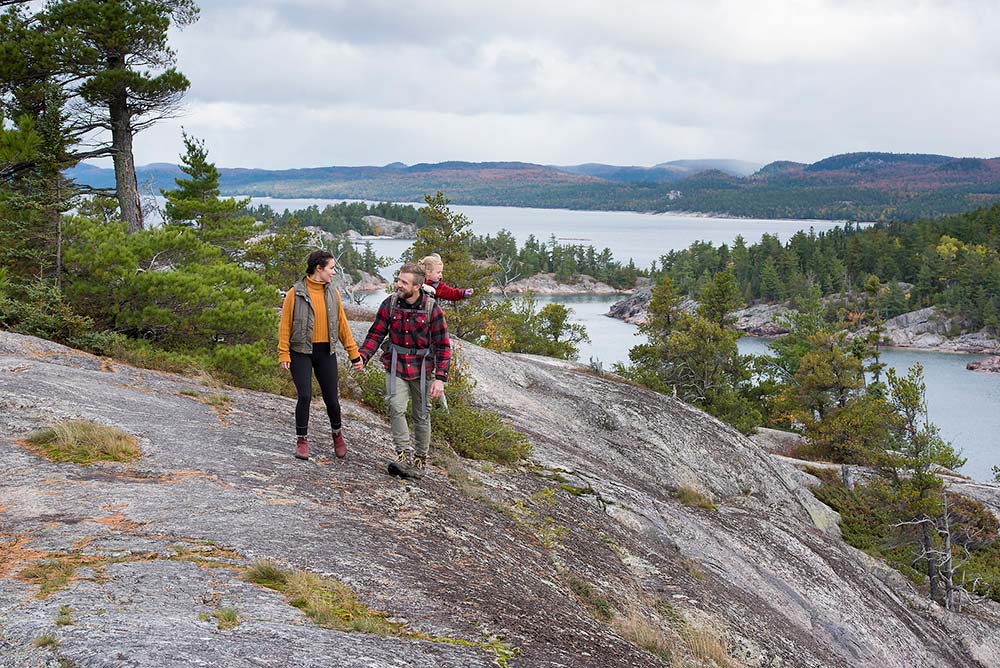
Photo Credit: James Smedley
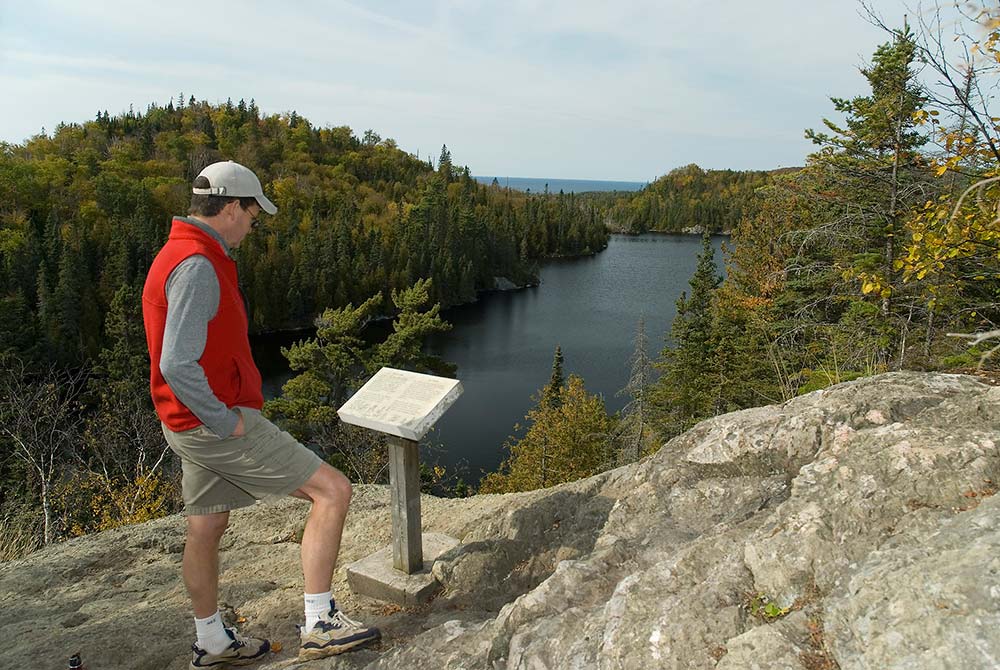
Photo Credit: James Smedley
Level of Fitness
Photo Credit: James Smedley
It is possible to jump from the couch to the hiking trail, but if our hiking legs and lungs are a little rusty we should be sure to take it slow and easy for the first few outings. There’s no shame in not completing a trail the first time out, or in choosing one that is short and sweet. Fortunately, there are plenty of options for day hikes to suit all levels.
Photo Credit: James Smedley
It doesn’t take long to get our muscles accustomed to navigating wooded pathways and even if we don’t make it to the trail’s end the first time around it simply gives us an excellent excuse to take another stab at it. There are tremendous rewards to be gleaned from reaching the hiking route’s pinnacle. Waterfalls, lookouts, coastlines, and panoramic views of trackless wilderness are always worth the hike. In Algoma Country, these could be 10 minutes down the trail or 10 hours. No matter our choice, the result is an increased fitness level that can be reinvested into more ambitious trips down the road.
Travelling Light
Photo Credit: James Smedley
Simply moving through the wilderness on foot to soak in the sounds, smells and sites of the trail require a minimum of equipment. Foraging for edible plants, photography, and bird watching are all common companion activities to hiking, and may require some additional gear, but just about everything we need will fit into a small backpack.
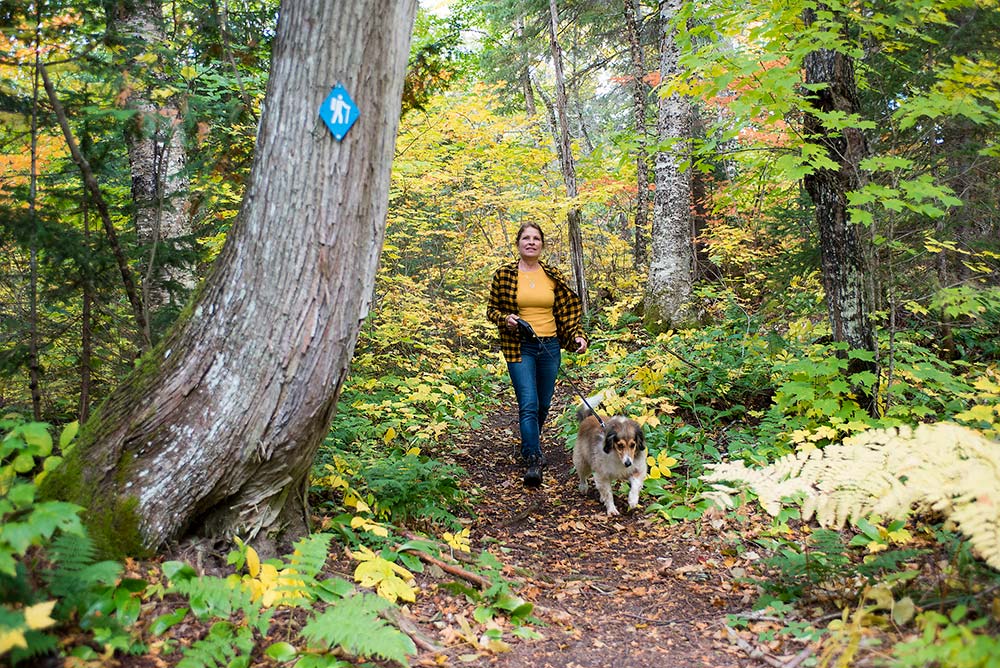
Photo Credit: James Smedley
Our pack should contain everything we need to sustain us on the trail and adjustments must be made for the season and the duration of our hike. Most important is food that can range from snacks to high-calorie meals and enough water to wash it down and keep us hydrated. Other summer essentials include sunglasses, hats, and sunscreen.
Safety First

Photo Credit: James Smedley
If available, a map and route description of the trail we’re on is helpful, especially if there are several branches or optional loops. If we are travelling a trail that is not well marked, then a topographic map, a compass, and a GPS unit – and the navigational skills to use them – are important additions to the pack. In the unlikely event of having to spend the night in the bush, matches in a waterproof package will come in handy. The potential for a warm fire in times of darkness and cold makes matches a crucial item that takes virtually no room in the pack.
Dress for the Occasion
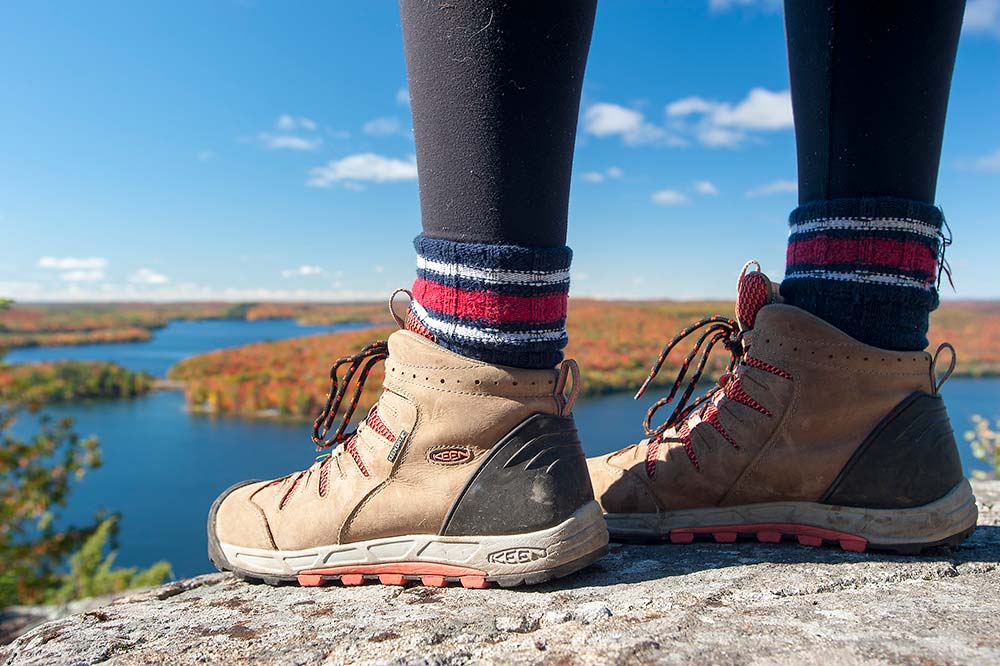
Photo Credit: James Smedley
Down at the business end, flip-flops are not an option. Sturdy hiking boots with some support and lots of treads will help us stay upright on uneven terrain and slippery surfaces that are often part of the hike. A quick-drying shirt that wicks away moisture is an important initial layer that helps to keep us warm and dry. If it’s chilly, additional layers of fleece or Merino wool will keep us warm when starting out and can be shed when the exertion of the trail translates to warmth. A light, waterproof windbreaker can be a trip saver in the event of rain or sharp winds and takes little space in the pack.
Photo Credit: James Smedley
We can fine-tune what we bring on each hike but it should all fit easily into a small pack, leaving us unencumbered to enjoy the diverse wilderness of Algoma’s hiking trails.
Related Posts

Hikes on the Voyager Trail
Hiking trails are plentiful in Algoma. Trails may be in a provincial park,...
Read More
River Paddling Adventures
With direct access to Lake Superior, Lake Huron, and some of the most...
Read More
A 5 Day Fall Road Trip
Fall is the perfect time to explore Algoma Country, located from the North...
Read More